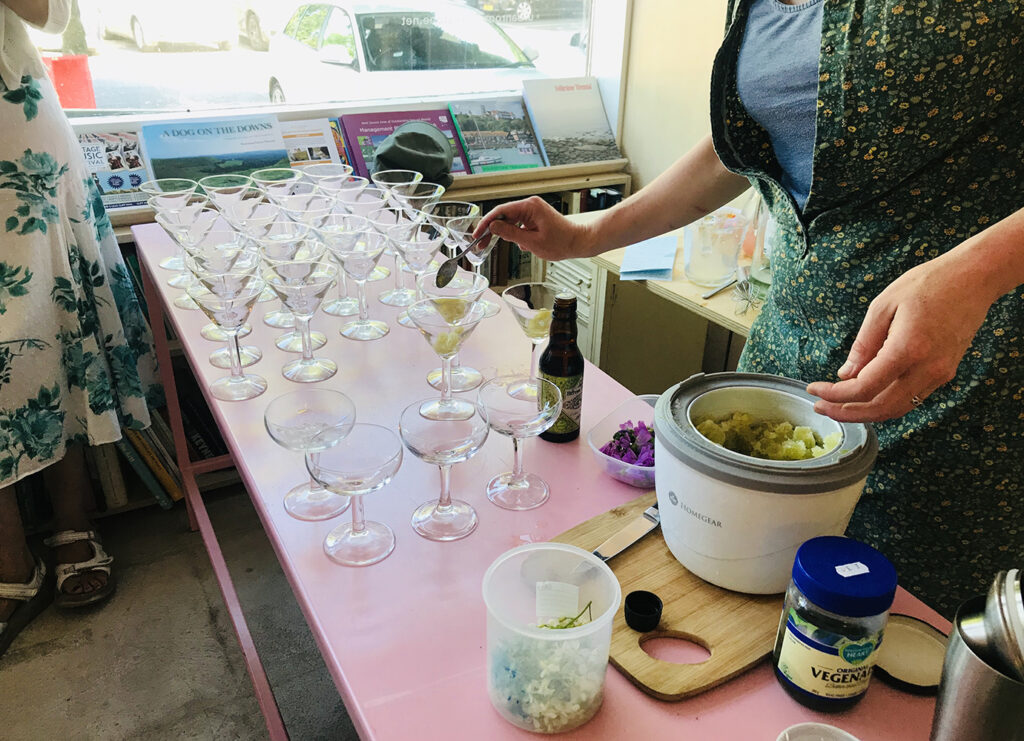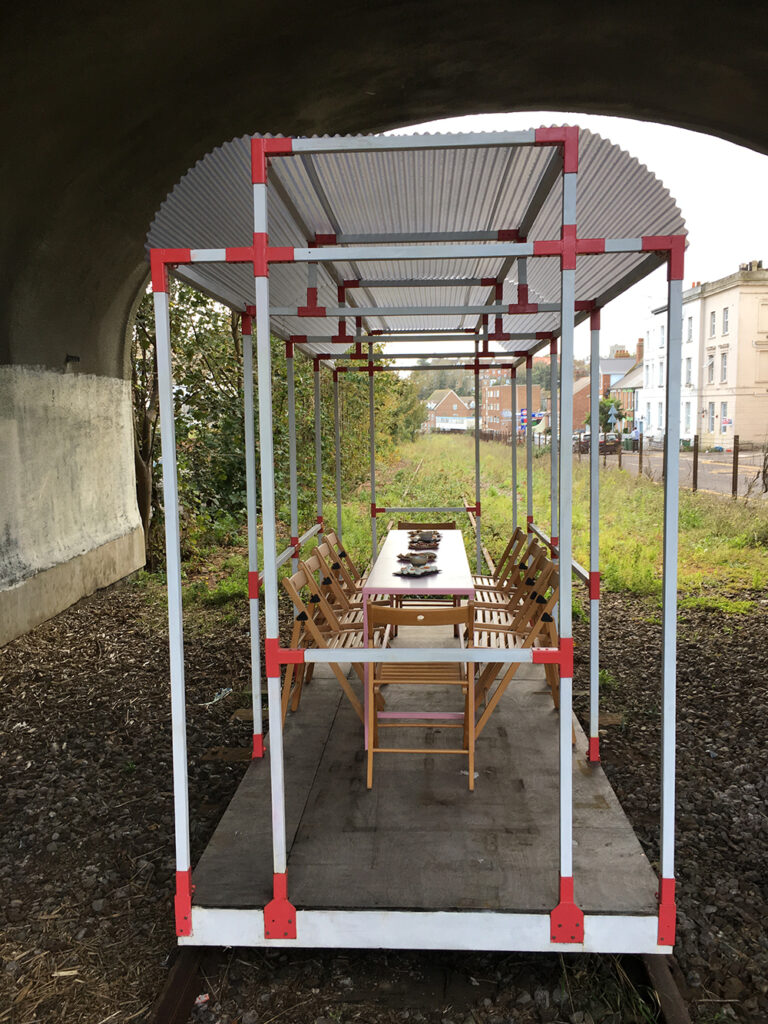NEAR:BOWER is a moment of intersection, an architecture of coincidence, a node in a constellation.
A geographical link between two people from opposite sides of the tracks pinpoints an apparently random location for breaking bread along the abandoned railway – the potential for communion between two strangers at an imaginary industrial-scale community dinner table.
It’s an old cook’s saying that ‘what grows together goes together’.
Folkestone’s derelict Harbour Line – left to its own devices for a relatively short time, began to ‘re-wild’. It was invaded – or reinvigorated – with extraordinary ‘weeds’: Alexanders, valerian and mallow by the harbour, brambles, sycamore, nettles and hogweed at the top. Seeds blew in from the countryside at one end and the coastal grasslands at the other, mapping out a story – a unique thumbprint of the shifting connection between land and sea. In this I found a mirror – this piece of land that seems to cut through the town, also contains the very nature of this corner of Kent. Not so long ago seemingly abandoned by industry and tourism alike, Folkestone is now characterised as much by its ‘native’ residents as by its newer arrivals. These non-natives, like the plantlife, migrate both from inland and overseas. They take root and make their lives here. What grows together goes together.
Alexanders (wild celery) arrived with the Romans – prized because they are edible all year round, Sycamore (a type of Maple) with its honeyed sap probably first came to the UK in the middle ages, I moved here with my family in 2016. What grows together goes together.
Now cut back again, the ‘invasive’ plant life removed (for now), the Harbour Line is imbued with potentiality.
A blank surface, a clean slate, a site waiting to be inhabited, an empty table, an axis.
An arbitrary connection across an axis – two strangers from either side of the tracks, neighbours, meeting at the exact spot which geographically connects them to share food which describes that very location, it’s recent history – its potential future.
A moment of intersection, an architecture of coincidence, a node in a constellation. What grows together goes together.
The root of the word ‘neighbour’ can be found in the words near – bower, a bower (or arbor) being a place of shelter and refuge, a space for communality and conviviality, created from the very nature it is found in. NEAR:BOWER creates that space as a moment in time, a temporal architecture constructed through the sharing of food which has grown or may grow at the place of intersection. The parasite becomes native, the interloper defines its own surroundings. What grows together goes together.






